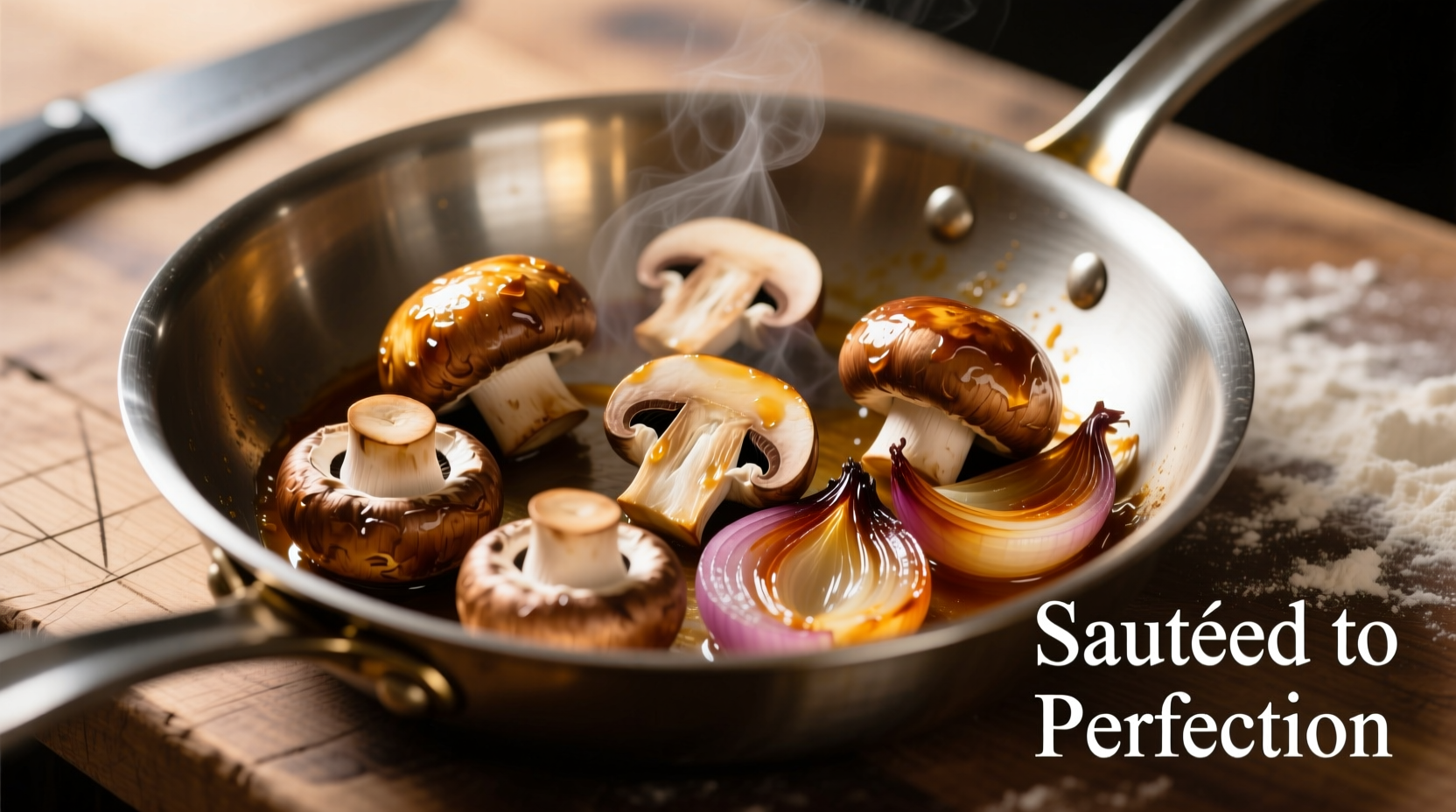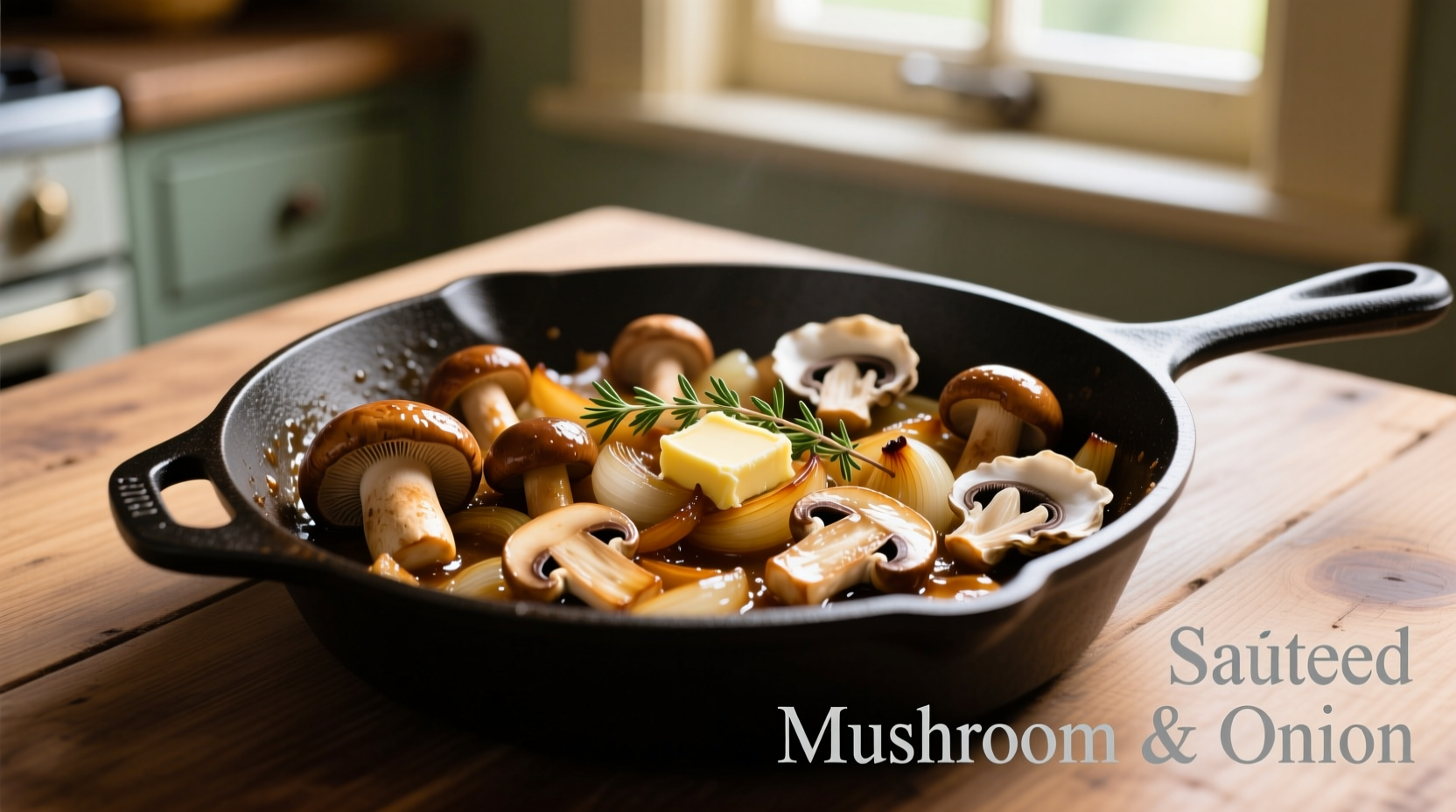Perfectly sautéed mushrooms with onions require high heat, proper timing, and the right sequence: cook mushrooms first until golden brown, remove, then caramelize onions before combining. This prevents soggy mushrooms while developing deep umami flavors through the Maillard reaction.
Mastering the art of sautéing mushrooms with onions transforms a simple side dish into a restaurant-quality component that elevates any meal. Whether you're preparing a quick weeknight dinner or crafting an elegant sauce base, understanding the precise technique ensures consistently flavorful results without common pitfalls like watery textures or uneven browning.
Why Mushrooms and Onions Demand Specific Cooking Techniques
Mushrooms release significant moisture when heated, while onions require time to caramelize properly. Combining them incorrectly leads to steamed rather than sautéed mushrooms. The USDA Food Safety and Inspection Service confirms that proper high-heat cooking not only enhances flavor but also ensures food safety by eliminating potential surface bacteria (FSIS Cooking Guidelines).
Essential Ingredients and Equipment
Quality ingredients form the foundation of exceptional sautéed mushrooms. Select firm, dry mushrooms with intact caps and fresh onions without soft spots. Your equipment matters as much as ingredients:
| Mushroom Variety | Flavor Profile | Best Cooking Time | Recommended Pairings |
|---|---|---|---|
| Crimini | Earthy, robust | 6-8 minutes | Beef dishes, creamy sauces |
| Shiitake | Umami-rich, smoky | 5-7 minutes | Asian cuisine, rice bowls |
| White Button | Mild, versatile | 5-6 minutes | All-purpose, soups |
| Portobello | Meaty, intense | 8-10 minutes | Burgers, steaks |
Step-by-Step Perfect Sauté Technique
Preparation Phase: Setting Up for Success
Slice mushrooms uniformly (1/4-inch thick) to ensure even cooking. Cut onions into 1/8-inch slices. Professional chefs at the Culinary Institute of America emphasize that consistent sizing prevents some pieces from overcooking while others remain raw (CIA Cooking Principles).
Cooking Sequence: The Critical Order Matters
- Heat your pan: Use a heavy-bottomed skillet over medium-high heat until a drop of water sizzles immediately
- Cook mushrooms first: Add mushrooms in a single layer without crowding (work in batches if needed)
- Resist stirring: Allow 3-4 minutes for proper browning before flipping
- Remove mushrooms: Transfer to plate once golden brown and set aside
- Cook onions: Add oil if needed, then onions, cooking 8-10 minutes until caramelized
- Combine: Return mushrooms to pan with onions for final flavor integration
Flavor Enhancement Secrets
Add 1 tablespoon of dry sherry or white wine during the final minute of cooking to deglaze the pan, lifting flavorful browned bits. Finish with fresh thyme and a pat of cold butter for professional restaurant shine. The American Chemical Society explains that butter's emulsifiers help distribute fat-soluble flavor compounds throughout the dish (ACS Food Chemistry).

Avoiding Common Sauté Mistakes
Understanding these pitfalls transforms your cooking results:
- Overcrowding the pan: Causes mushrooms to steam rather than brown
- Adding salt too early: Draw out moisture prematurely, delaying browning
- Using low heat: Prevents Maillard reaction necessary for flavor development
- Adding onions too soon: Creates excess liquid that prevents proper mushroom browning
Variations for Different Dietary Needs
Adapt this basic technique for various preferences:
- Vegan version: Substitute butter with olive oil and add nutritional yeast for umami
- Low-sodium option: Use mushroom broth instead of wine for deglazing
- Gluten-free: Naturally compliant when using pure oils and vinegars
- Enhanced protein: Add cooked lentils or chickpeas during final mixing
Serving Suggestions and Pairings
Sautéed mushrooms with onions serve as a versatile component:
- Top grilled steak or roasted chicken for instant elegance
- Mix into pasta dishes or risotto during final preparation
- Spread on toasted baguette slices for quick appetizers
- Fold into omelets or frittatas for weekend brunch
- Use as pizza topping with fresh mozzarella and arugula
Storage and Reheating Guidelines
Store cooled mushrooms in airtight container for up to 4 days. Reheat gently in skillet over medium-low heat to preserve texture. Avoid microwaving, which creates uneven heating and sogginess. The National Center for Home Food Preservation recommends reheating cooked mushrooms to 165°F internal temperature for safety (NCHFP Guidelines).
When This Technique Works Best
This sauté method shines with:
- Weeknight meals requiring quick, flavorful components
- Dishes needing umami depth without meat products
- Recipes where texture contrast matters (crisp-tender vegetables)
Avoid using this technique when preparing soups or stews where texture matters less than flavor infusion.











 浙公网安备
33010002000092号
浙公网安备
33010002000092号 浙B2-20120091-4
浙B2-20120091-4